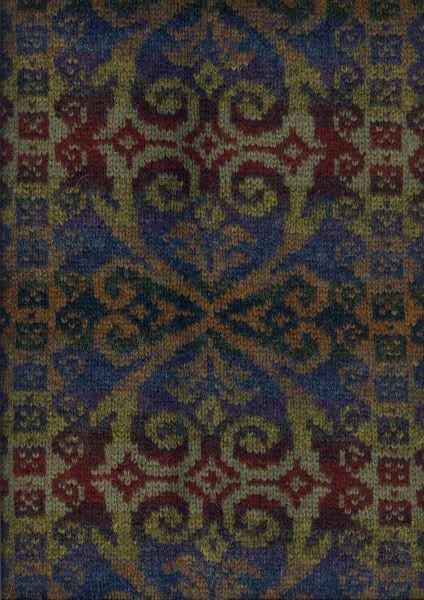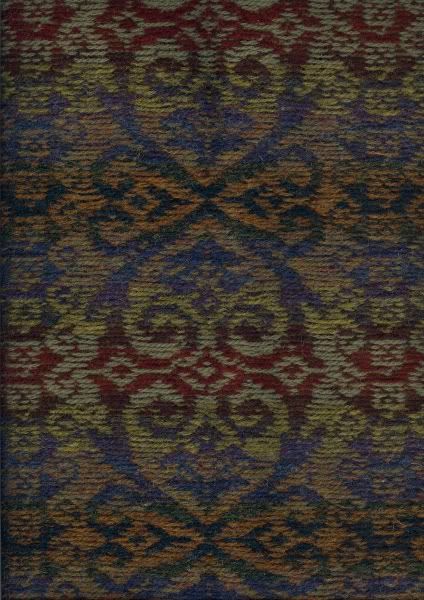Knitters are intimidated by fair isle because of its perceived complexity. Yes, these are challenging projects, don’t get me wrong. However, they look harder than they are. The time consuming part of the process is the gauge: usually 30 sts and 36 rows to 4″.  AS’s new yarns knit up to a larger gauge: 28 sts and 32 rows per 4″ — still not what I would call bulky!! For my size sweater, I am knitting 347 sts every round and each round takes forever!
Facts and fiction:
- Oregon uses 17 colors and looks extremely complicated, but in true fair isle, you never knit with more than two colors in any given row. In Bohus and Norwegian knitting, there are times you knit with up to 4 colors at once.
- People are scared off/confused by steeks. Steeks ( a word that roughly means “gate”) is used to bridge a gap, such as a center front in a cardigan or a sleeve opening, so you can knit in the round while doing color work. The benefit is that you always knit to create stockinette stitch. Also, the design pattern is always facing you — you are not trying to figure out where you are in the pattern from the wrong side where the stranding occurs.The steek itself consists of 10 sts of stockinette stitch. It is just a ~one inch wide strip of knitting strategically placed for cutting after the “tube” is done. Shaping is done on either side of the steek and magically appears once cut. As I get to the v-neck shaping on Oregon, you’ll see what I mean. You carefully cut the steek up the middle (leaving 5 sts on each side) and then finish the cut edges.Â
- If done correctly, the yarns will not get all twisted together (as in intarsia). As you knit, you carry one color above and one below. The yarns run parallel and do not cross each other. There is no need to twist the yarns together — in fact, DO NOT twist them unless absolutely necessary. I only twist the yarns for carries across 8 or more sts. I have seen sweaters where the knitter twisted all through the sweater and it looked terrible — the sts get very distorted and the color that is being carried shows through.Â
To keep track of the colors, I made a color card with the name and symbol of each color next to a small length of yarn. Some colors are very similar and difficult to keep straight. To keep track of where you are in the pattern, use sticky notes — place the sticky edge along the TOP line of the row you are on. Another thing people use is a magnetic board. Either way, you need to have a visual line to follow to keep track of your work.
There you have it: Fair Isle 101. Once you’ve done one of these, it all makes sense!
Wendy asked to see the inside of the color work. I thought I’d share a picture from an already finished sweater because this design really shows the reverse image of the stranding. Here is the outside (public) view:
And the inside:
This design is Henry the VIII from Tudor Roses. Now I must knit!



















Thanks for the little lesson. I appreciate the picture of the inside of the sweater. Interesting stuff, and not as hard as first thought, maybe?! The colors choices and blending are just beautiful. I never would have guessed that there were 17 colors in that pattern, but now that I’ve studied it a bit… I can see it. My brain has been looking at self-patterning sock yarn for a week — it doesn’t all come off the skein like that? (joking, just joking!)
It’ll be fun to watch your progress, Susan.
Comment by Wendy in VA — July 25, 2006 @ 2:23 pm